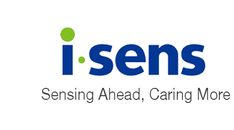
Hyperglycemia: High Blood Sugar
Hyperglycemia is a medical term that refers to high blood glucose levels.1 It is defined as blood glucose levels >125 mg/dL while fasting and >180 mg/dL 2-hours postprandial.2 Untreated severe hyperglycemia in diabetics can acutely progress to serious, life-threatening complications such as diabetic ketoacidosis (DKA) and hyperosmolar hyperglycemic state (HHS).3 As such, it is important to practice good diabetes management, be able to recognize the symptoms of hyperglycemia, and seek prompt treatment when necessary.1–3
What Causes Hyperglycemia?
There are several physiological and lifestyle-related causes of hyperglycemia in individuals with type 1 or 2 diabetes mellitus:1
- Insufficient administration of insulin
- The body’s ineffective use of insulin
- Eating more than planned
- Exercising less than planned
- Infection (eg, pneumonia, urinary tract infection)
- Other factors that may temporarily affect blood glucose levels (eg, physical or psychological stress, dawn phenomenon, etc.)
In addition to the insulin resistance and deficiency in individuals with diabetes that impair glucose utilization, the above factors can increase gluconeogenesis (synthesis of new glucose), glycogenolysis (breaking down of glycogen to glucose), and counterregulatory stress hormones (eg, glucagon, cortisol, growth hormone, catecholamines) which can result in acute hyperglycemia.3–5
What Are the Symptoms of Hyperglycemia?
Individuals with hyperglycemia may present with the following symptoms:2,6
- Frequent urination
- Excessive thirst
- Fatigue
- Weight loss
- Blurred vision
- Recurring infections
It is important to address these symptoms and treat hyperglycemia promptly to prevent hyperglycemia from progressing into DKA or HHS and to reduce long-term complications.6
How Can I Treat Hyperglycemia?
There are several ways to treat hyperglycemia.1 With certain exceptions, hyperglycemia can often be treated with increased physical activity and dietary changes. However, when hyperglycemia persists even after significant lifestyle changes, initiation or changes to medication or insulin dosage and/or administration may be needed. For individuals presenting with hyperglycemia and catabolic symptoms (ie, weight loss), insulin therapy is the recommended initial treatment.4
For individuals with blood glucose levels >240 mg/dL, it is recommended to check whether ketones are present in the urine.1 The American Diabetes Association warns that individuals with ketones present in their urines should NOT engage in physical activity, as exercising can further increase blood glucose levels. Individuals in this state should consult their health care team for alternative safe ways to treat hyperglycemia.
What Are the Red-Flag Symptoms of Hyperglycemia?
If hyperglycemia is left untreated, an individual may develop severe complications such as DKA (ie, diabetic coma) or HHS (ie, severe hyperglycemia without ketoacidosis).1,3 DKA occurs when the body lacks insulin to utilize glucose as fuel and begins breaking down fat reserves for energy, a process called ketosis. Ketones are produced as a byproduct of this process, and they build up in the blood, causing ketoacidosis. Ketoacidosis causes acidemia (ie, acidic blood) and can lead to serious consequences such as cerebral edema, coma, and even death.7
While the pathogenesis of HHS is not as well understood as that of DKA, the underlying mechanisms are largely similar.3 In HHS, there may be enough insulin to prevent ketosis but not to control hyperglycemia, leading to decreased glucose excretion, severe dehydration, and impaired renal function.
DKA and HHS are life-threatening and require immediate medical attention. Individuals should watch out for the following symptoms:1,2
- Nausea and vomiting
- Fruity-smelling breath
- Shortness of breath
- Very dry mouth
- Abdominal pain
- Altered mental status
Individuals presenting with DKA or HHS should be immediately and aggressively treated with saline rehydration, intravenous insulin, and electrolyte replacement in a hospital setting.4
|
References: |
(Disclaimer)
The content of this article is intended to provide a general information and knowledge on the subject matter. The views expressed in newsletters, articles, and blogs in the i-SENS USA website are not necessarily those of i-SENS Incorporated, i-SENS USA Incorporated or our publishers. Medical or nutritional information on i-SENS USA website is not intended to replace professional medical advice – you should always consult a specialist with any questions about your specific circumstances.





Add a comment